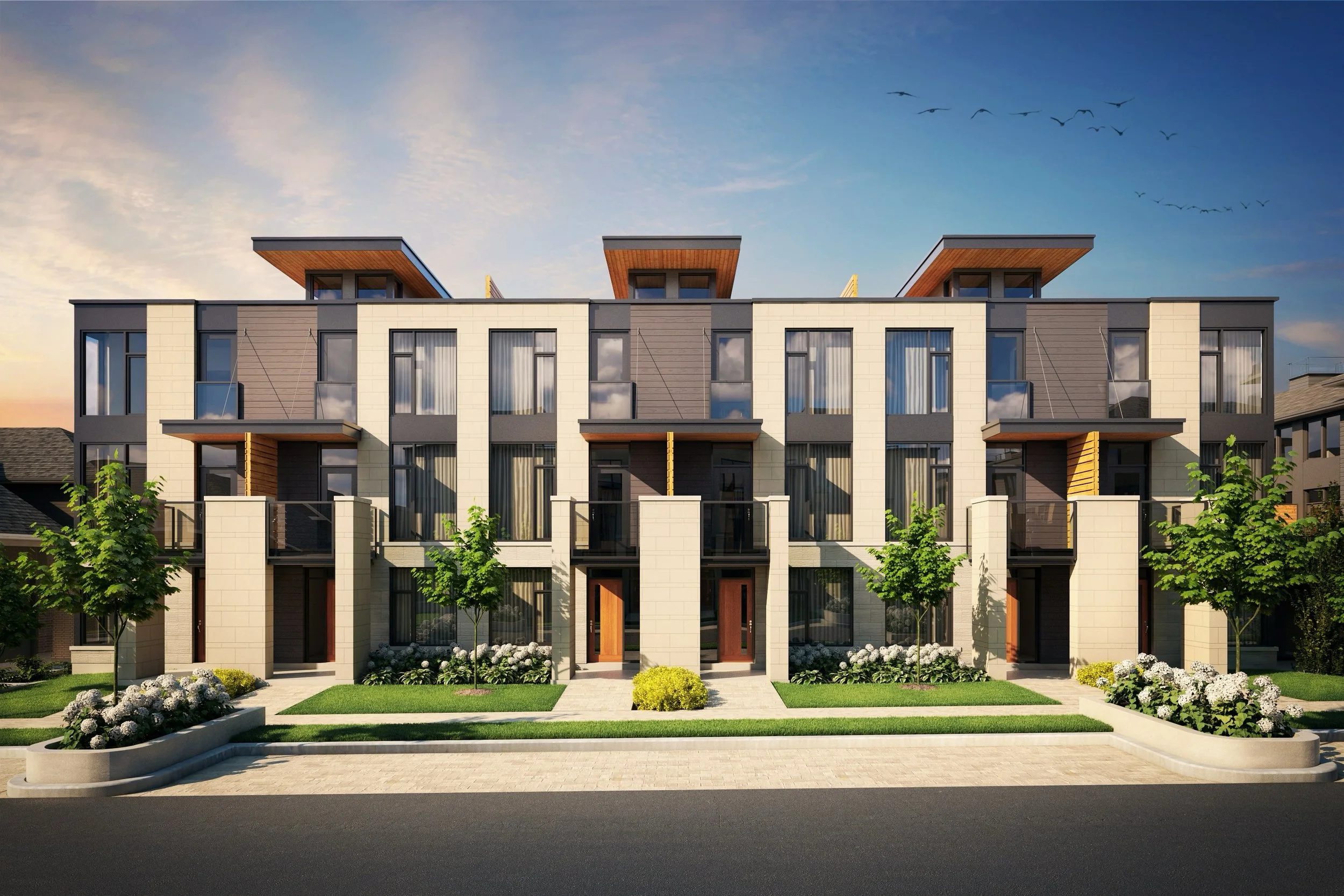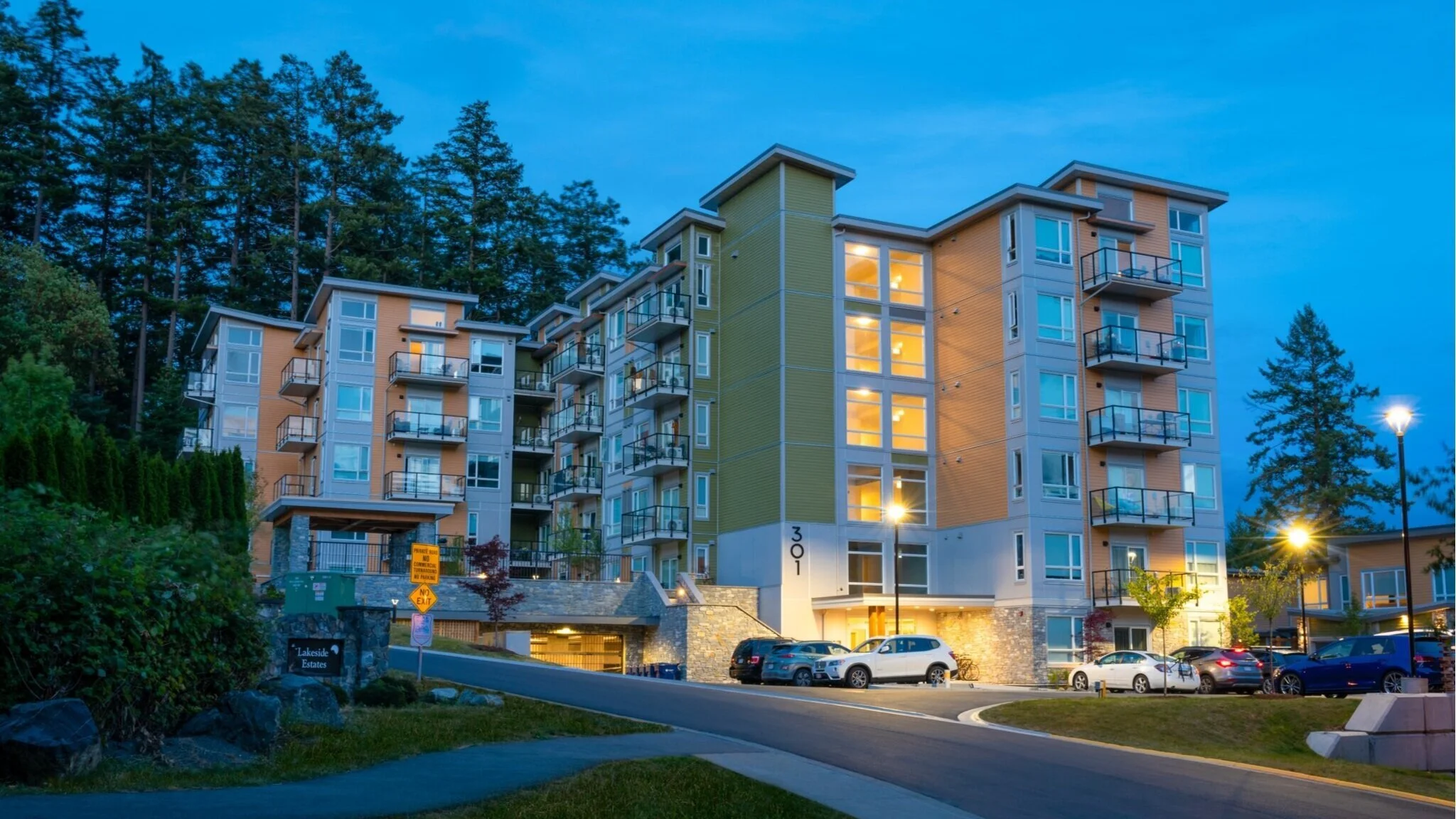what “missing middle” really means — and why it matters
Last week, I attended a housing panel here in Vancouver with a lineup of developers, planners, and finance experts. When the topic of “missing middle” housing came up, I noticed something interesting — almost everyone in the room had a different definition. Some were talking about income levels, others about housing types, and a few about an entire class of buyers and renters who’ve been left behind.
That confusion is understandable. “Missing middle” has become one of those terms that everyone uses but few define the same way. So let’s unpack what it actually means — from policy makers, to cities, to the people who make up this elusive “middle.”
what the missing middle actually means
At its core, the missing middle describes two things at once:
A gap in housing types, and
A gap in who the housing market serves.
BC Housing uses it to describe middle-income working households — people earning too much to qualify for subsidized housing but not enough to buy or rent comfortably at market prices. Think teachers, nurses, office managers, tradespeople, and young professionals earning roughly $60,000 to $120,000 per year in total household income.
CMHC expands that definition. They describe the missing middle as both “the gap in housing for middle-income households” and “the housing forms between single detached homes and high-rise apartments.” So it’s both a demographic problem and a physical one — a lack of townhomes, fourplexes, and low-rise buildings that once made up much of Canada’s family housing stock.
The City of Vancouver focuses more on the physical side. Their planning documents describe missing middle housing as “multi-unit buildings such as duplexes, triplexes, townhouses and low-rise apartments that fit between single-family houses and apartment buildings over six storeys.”
Other BC municipalities echo that. Victoria talks about “houseplexes” — two to six units on a single lot — for young families and empty nesters. North Vancouver emphasizes the people side: middle-income earners who work in the community but can’t afford to live there.
So depending on who you ask, the missing middle is either a housing form, a household type, or both — and that’s exactly why conversations around it can feel confusing.
the two gaps we’re actually talking about
the physical gap
For decades, city zoning rules across Metro Vancouver locked most residential land into single-family use. Builders could go tall (condos) or stay detached (houses), but there wasn’t much room in between. That’s why we have thousands of single-family homes and hundreds of condo towers — but very few ground-oriented, multi-unit homes in established neighbourhoods.
Townhomes, duplexes, triplexes, and small low-rises used to be the natural step for growing families or downsizing owners. Today, they’re the missing rungs on the ladder.
the demographic gap
Then there’s the people side. Middle-income households — the backbone of any city — are being squeezed out. They earn too much to qualify for housing programs, but not enough to compete with investors or high-income buyers.
In Metro Vancouver, that might mean a family earning $100,000 per year still can’t buy a modest townhouse, and often can’t find a rental big enough for two kids. These are the nurses, teachers, small business owners, and tech workers who keep the local economy running — but can’t afford to live near where they work.
When we talk about “missing middle,” we’re really talking about this intersection — the housing that’s missing and the people who are missing from our communities because of it.
why this matters
When the middle is squeezed out, it affects everything. Schools lose families. Employers lose staff. Communities lose diversity and stability.
And from a development perspective, this group represents latent demand — people ready to buy or rent if the right product existed. But traditional zoning and high land costs have made it almost impossible to build the very housing forms they need most.
That’s why policy makers are now racing to unlock small-scale multi-unit housing (through programs like BC’s Bill 44 and Vancouver’s new multiplex zoning). The goal is to fill the gap with housing that feels neighbourhood-scaled, offers livable space for families, and can be delivered faster than towers — ideally at prices that middle-income households can actually afford.
moving forward
It’s easy to treat “missing middle” as a buzzword, but it’s really the story of how our cities evolved — and where they need to go next. The good news is that both levels of government are finally aligned on one thing: rebuilding the middle layer of our housing ecosystem is essential to keeping communities functional and balanced.
For developers and landowners, that creates an opportunity — not just to build homes, but to design for a demographicthat has been priced out for decades.
make the missing middle possible
If you have a site or project that could fit into this space — whether it’s a small apartment site, multiplex, or townhome concept — I can help you design a Development Value Blueprint™ that aligns your site’s potential with this growing demand.
Together, we can identify how to position your project for the missing middle — the families, professionals, and everyday Vancouverites who are still looking for a place to belong.
→ Get in touch to explore how your land or project could help close BC’s missing middle gap.
-
BC Housing. (n.d.). HousingHub program overview. Retrieved October 30, 2025, from https://www.bchousing.org/projects-partners/housinghub
BC Housing. (2023). 2023 Housing Income Limits (HILs). Retrieved October 30, 2025, from https://www.bchousing.org/sites/default/files/media/documents/2023-HILs-Effective-January-1-2023.pdf
BC Housing. (2024, April ?). BC Builds adds more sites to fast-track housing for people with middle incomes.Retrieved from https://news.bchousing.org/bc-builds-adds-more-sites-to-fast-track-housing-for-people-with-middle-incomes/
City of Victoria. (n.d.). Missing Middle Housing. Retrieved October 30, 2025, from https://www.victoria.ca/building-business/permits-development-construction/rezoning-development/missing-middle-housing
City of Vancouver. (2022, April). Housing Needs Report. Retrieved from https://vancouver.ca/files/cov/pds-housing-policy-housing-needs-report.pdf
Canada Mortgage and Housing Corporation (CMHC). (2025, [month unknown]). CMHC releases latest housing supply gaps report. Retrieved from https://www.cmhc-schl.gc.ca/media-newsroom/news-releases/2025/cmhc-releases-latest-housing-supply-gaps-report
Canada Mortgage and Housing Corporation (CMHC). (n.d.). Why Canada’s housing supply gap exists and how to fix it. Retrieved October 30, 2025, from https://www.cmhc-schl.gc.ca/observer/2025/updating-canada-housing-supply-shortages-new-housing-supply-gap-estimates
von Bergmann, J., & Lauster, N. (2021, May 17). What we do and don’t know about housing affordability challenges in BC. Retrieved from https://engage.gov.bc.ca/app/uploads/sites/121/2021/06/WhatWeKnow_Appendix_1.pdf
School of Cities, University of Toronto. (2024, November). Enabling the missing middle. Retrieved from https://schoolofcities.utoronto.ca/wp-content/uploads/2024/11/Enabling-the-Missing-Middle_November-2024_1.pdf
Kelowna Real Estate. (2024). BC’s housing supply crisis: Analyzing the gaps and proposals for 2024-2025.Retrieved from https://www.kelownarealestate.com/blog-posts/bcs-housing-supply-crisis-analyzing-the-gaps-and-proposals-for-2024-2025
B.C. & Vancouver renter-affordability statistics. (2023). B.C. leads country with highest proportion of renters living unaffordable conditions. Retrieved from https://www.biv.com/news/real-estate/bc-leads-country-highest-proportion-renters-living-unaffordable-conditions-8272198
















